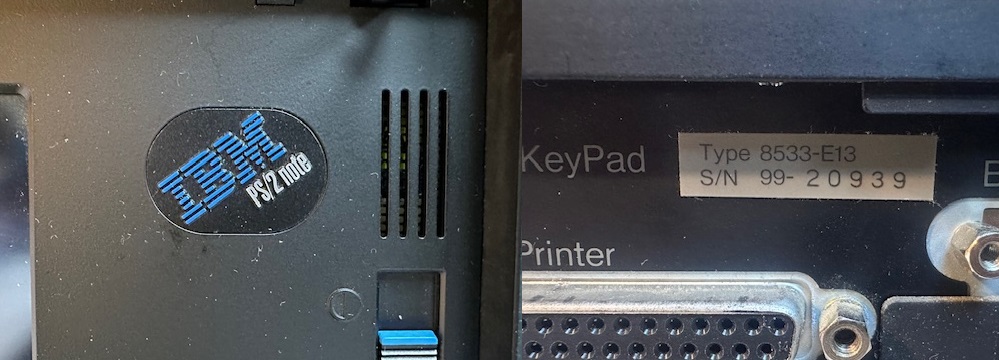
N33 is derided from the 8533 Model Type. Yeah, IBM had some really snappy titles back before the Thinkpad.
Note: this article is about the 12Mhz 386 model which was seemingly derived from the first generation PS/55 Note, whereas the 16Mhz version was derived from the second generation PS/55 Note which was called the N23 SX. Inside it's a completely different motherboard to the 16Mhz with no external display, no invert display switch and no built in floppy because the two-part construction of the main two boards leave no room for the Hard Drive to mount on top of them - therefore it's moved to take up the space of the floppy drive. I believe it was an option to have either a HDD or a FDD and my one has the HDD option with FDD connected via the external connector.
The dual-planar design mainboard PCBs inside are codenamed APEX-MAIN and SUB-BOARD
The N33 machines are successors to the original note and N23 SX Japanese machines and is a precursor to the N51 and C23V Notes - which eventually became the C52 Thinkpad 700C. They're ISA bus.
They have an inherant flaw which revolve around the fuses inside, one for the main battery and one for the AC. Both N33 machines have a main power switch at the rear and another Standby switch on the front. If both are "on" and the machine still will not power up, then the notorious microfuse in the DC-DC converter is most likely blown. If either one is blown the system either it will run fine on batteries but not on AC and the battery is not charged or run fine on AC but not on battery. I've also found the barrel connector can suffer from corrosion and you need to 'rub' the power connector in and out to get a good connnection for the 15V DC.
Here is a picture of the 16Mhz model on the left and the 12Mhz model on the right. The 16Mhz is mainly one large motherboard which is the same as the Japanese PS/55 Note N23 SX, whereas the 12Mhz model is two equally-sized boards connected together the same as the PS/55 Note (1st gen). Due to this 'fatter' construction of the main two boards, the hard drive cannot sit directly on top and is moved into the void where the internal floppy drive sits on the Japanese N23 SX machine.
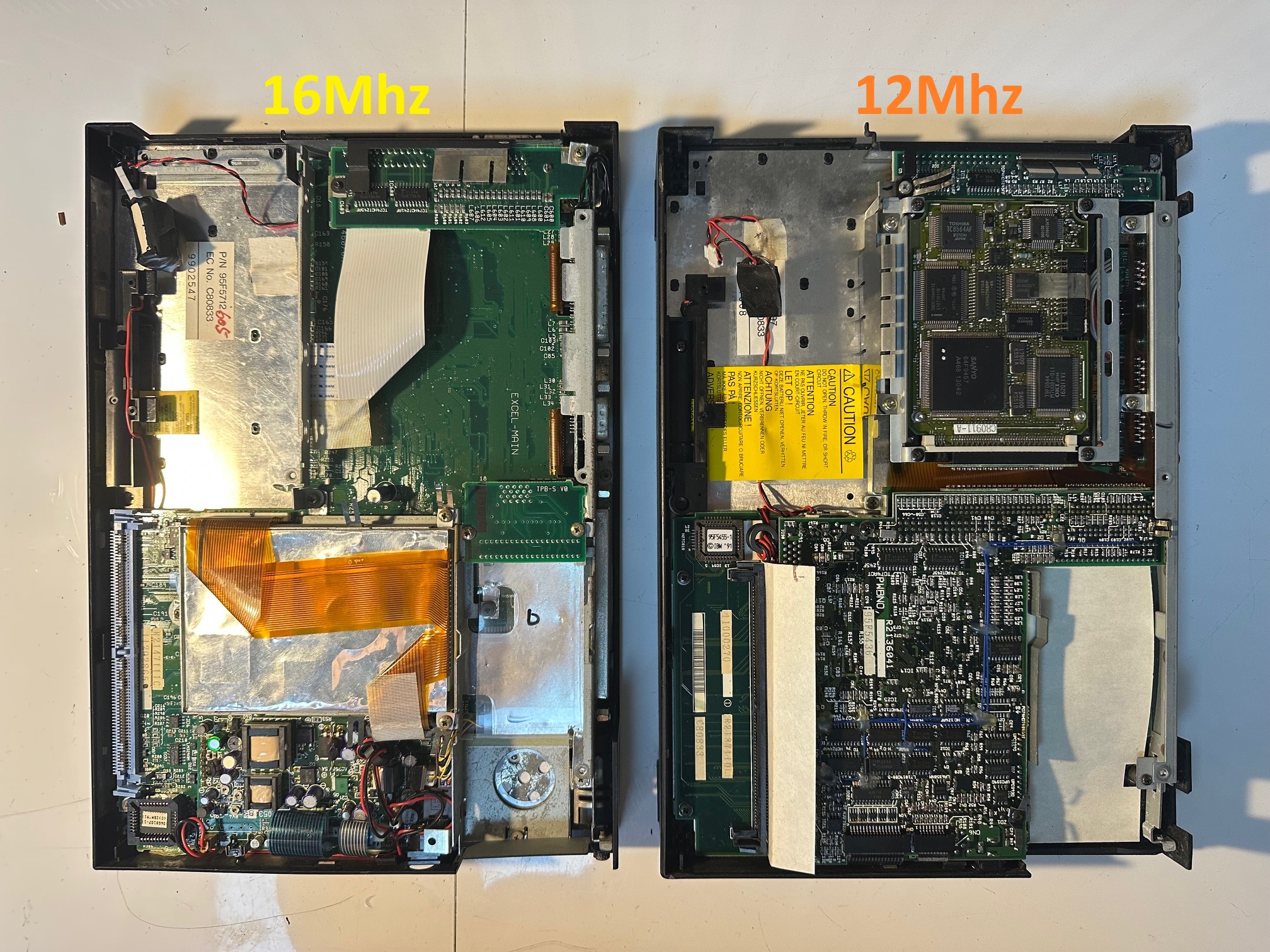
Also here is a picture showing the 12Mhz without external display output and 16Mhz model with external display output:
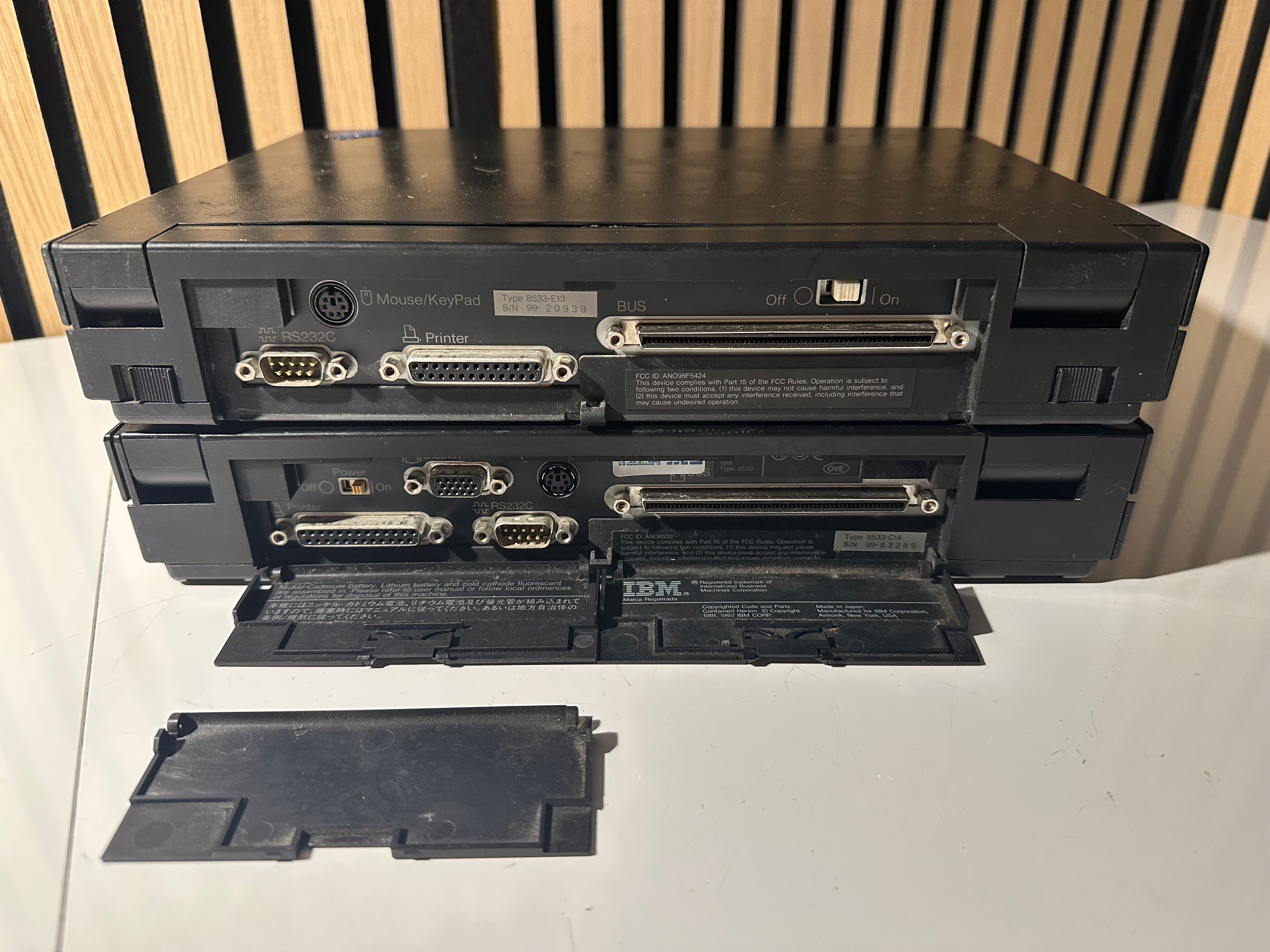
Another clue on the outside is that the 16Mhz has an 'invert screen' switch which will flip the monochrome display from light to dark. This is not present on the 12Mhz.
The 12Mhz model LED bezel without the invert switch:

I'll report back next week when I get some time with these machines but it would be interesting to note the design continuity between the N23, 33 and 45 through to the 425 / 350 which share a similar, but slightly evolved design
N33 SX 12Mhz Teardown
Intially I wanted to make sure there was no battery damage and check the fuses. You take the 3 obvious screws off the base and one side-ways on behind the main battery. You then push out this little door to reveal the clock battery, and remove it..
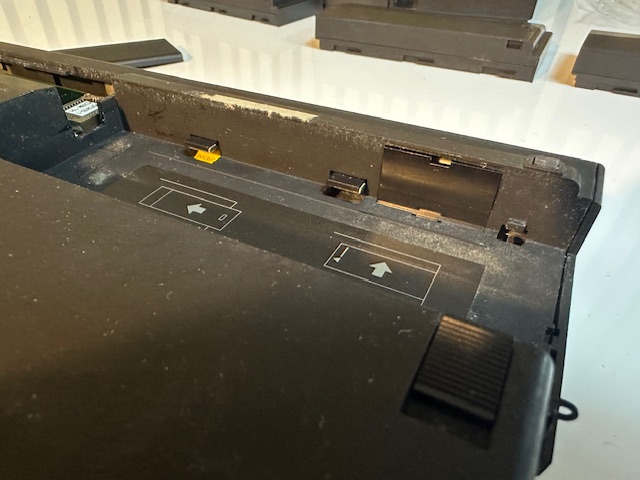
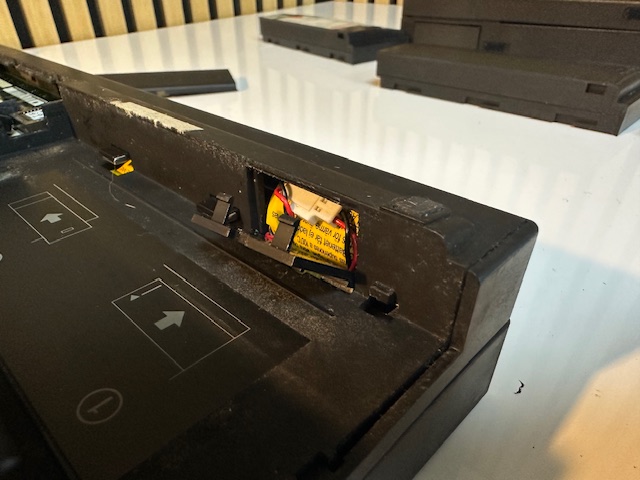
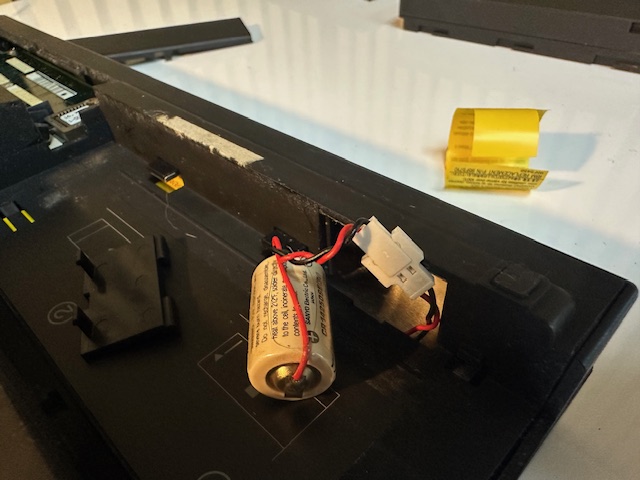
You then spudge your way around the base, where it will eventually pop off:

Revealing the deadly green hibernation/bridge battery. Remove it. The machine can no longer recover from going into standby but at least it will not corrode itself to death when this battery leaks.
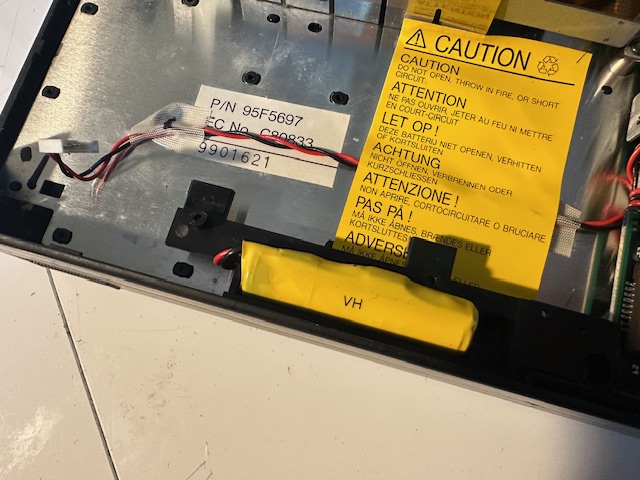
This next thing to take out is called the 'sub board' in the HMM and contains all 2 fuses along with a bunch of leaking surface mounted capacitors. It's a bit of a nightmare to pull out - it's held in place by 3 screws, a metal lever, 2 friction ribbon cables on the left, 3 battery connector cables and a bunch of drive attachments on both the left side and the bottom. You basically have to gently wriggle all around it removing it. It will eventually come loose.
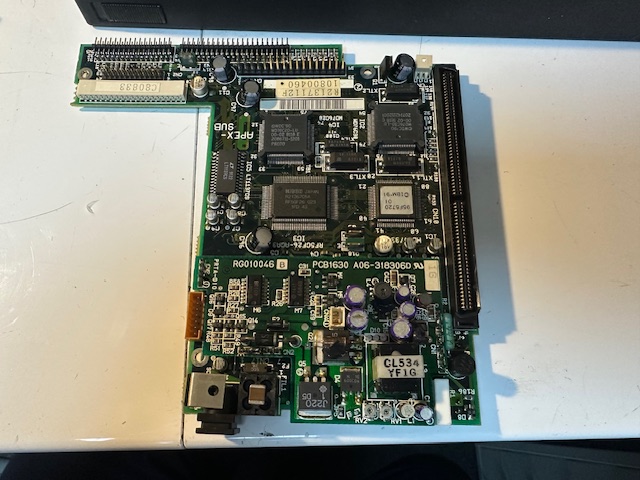
Here is the motherboard underneath:
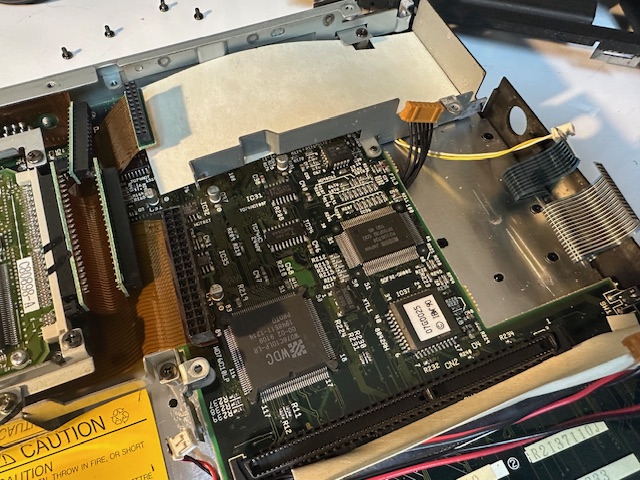
These two connectors are directly underneath the board with not a lot of space to pull them. The yellow one is (I think( for the lid detection - hibernate microswitch) and the other one possibly for the LED status lamps.
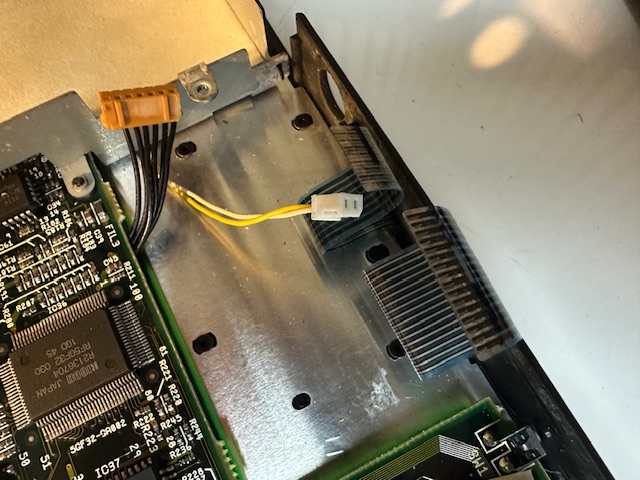
Now the hard bit - on the sub board that you have removed you'll find a daughterboard soldered on with a bunch of caps on. It's held in place by 3 soldered pin connectors, which you have to desolder to be able to remove the throughhole caps. On my removals, none of the through hole caps were leaking. Most of the surface mounted ones were.


This is the daughterboard removed. Note some of the connectors holding this daughterboard down have bridged pins. I don't know if this is intentional, but replicated the bridges when putting it back.
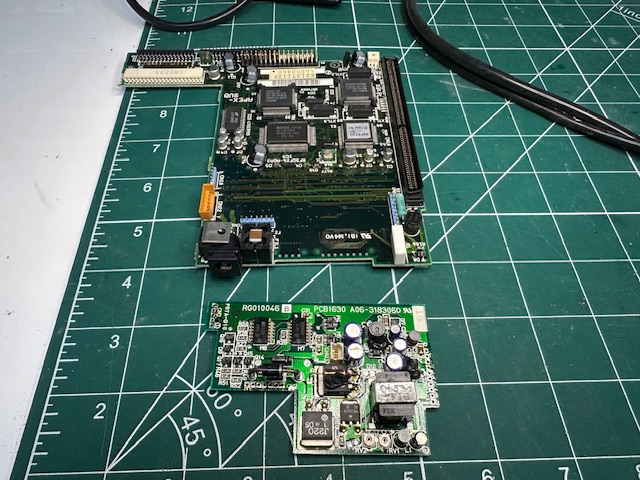
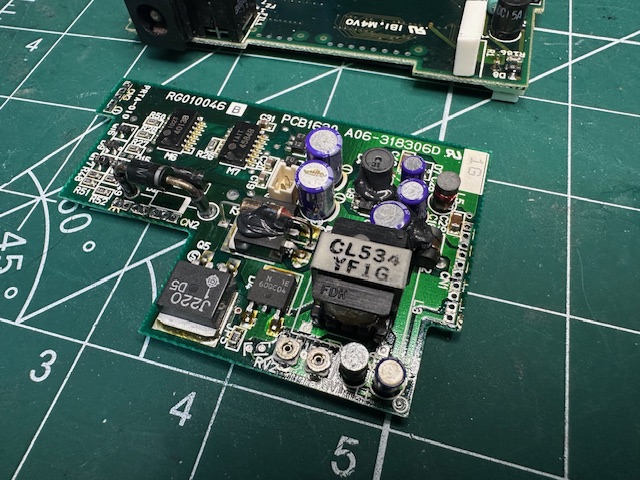
Here, where C11 was, it's possible the leaking electrolye had damaged some of the traces to the left of it. I can't be sure:
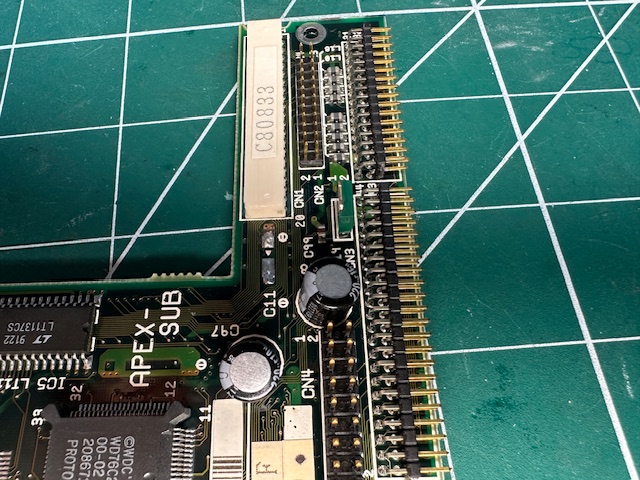
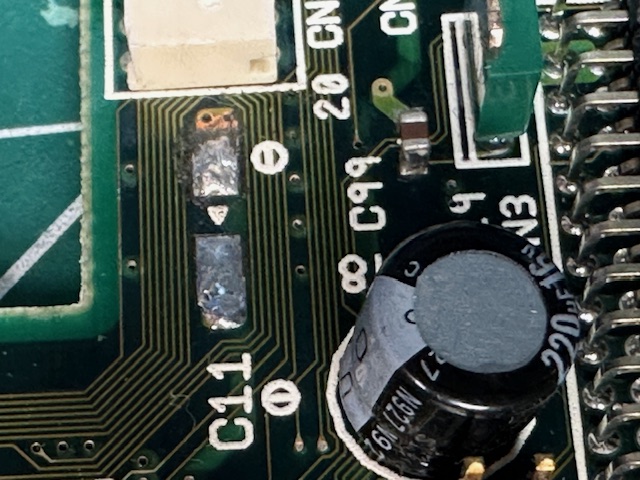
These three were definitely leaking:
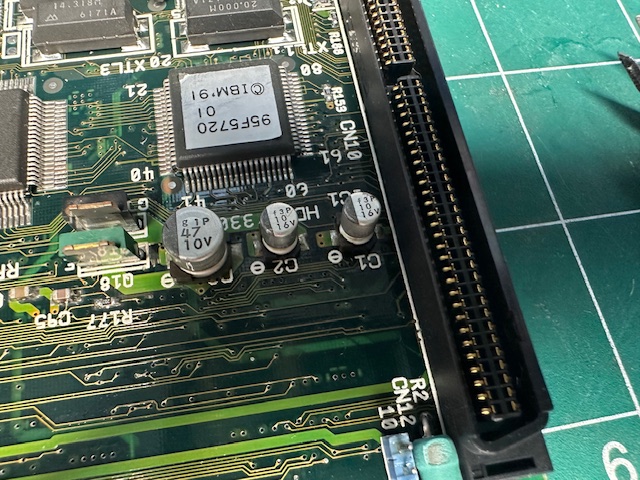
And here is the recapped board, soldered back on.

Below is a picture showing the two obvious fuses. 1 is the throughole 2a fuse. Mine initially was not blown and then because I think I had an iffy barrel connector, it blew. 2) there is a strange cylinder fuse on the right - which supposedly is for the battery. Mine had not blown.
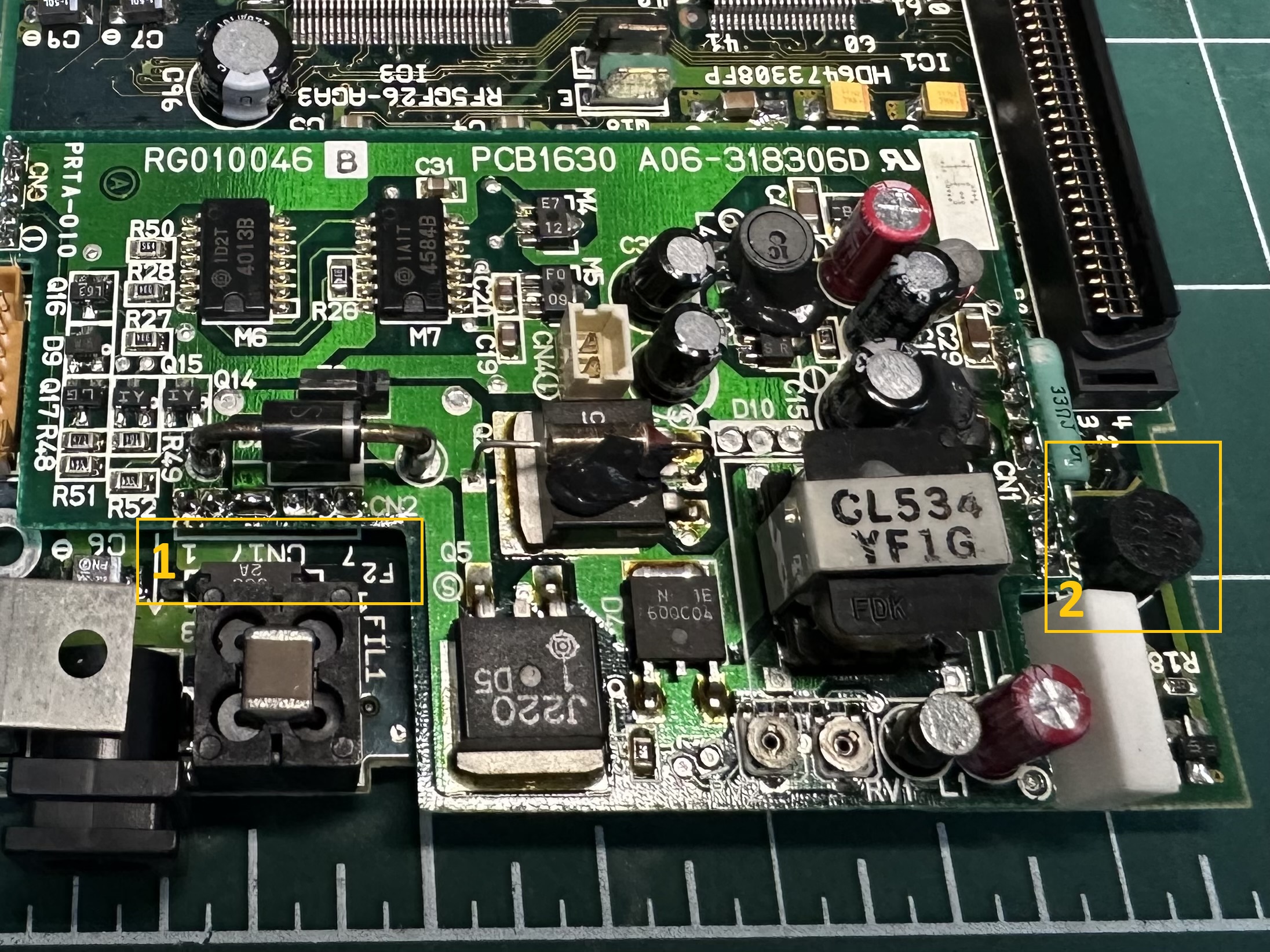
I was able to get some spare cyclinder and through-hole fuses on ebay for a few quid. I think a bundle of small 2a ones would do the trick for all 3 large fuses on the machine.
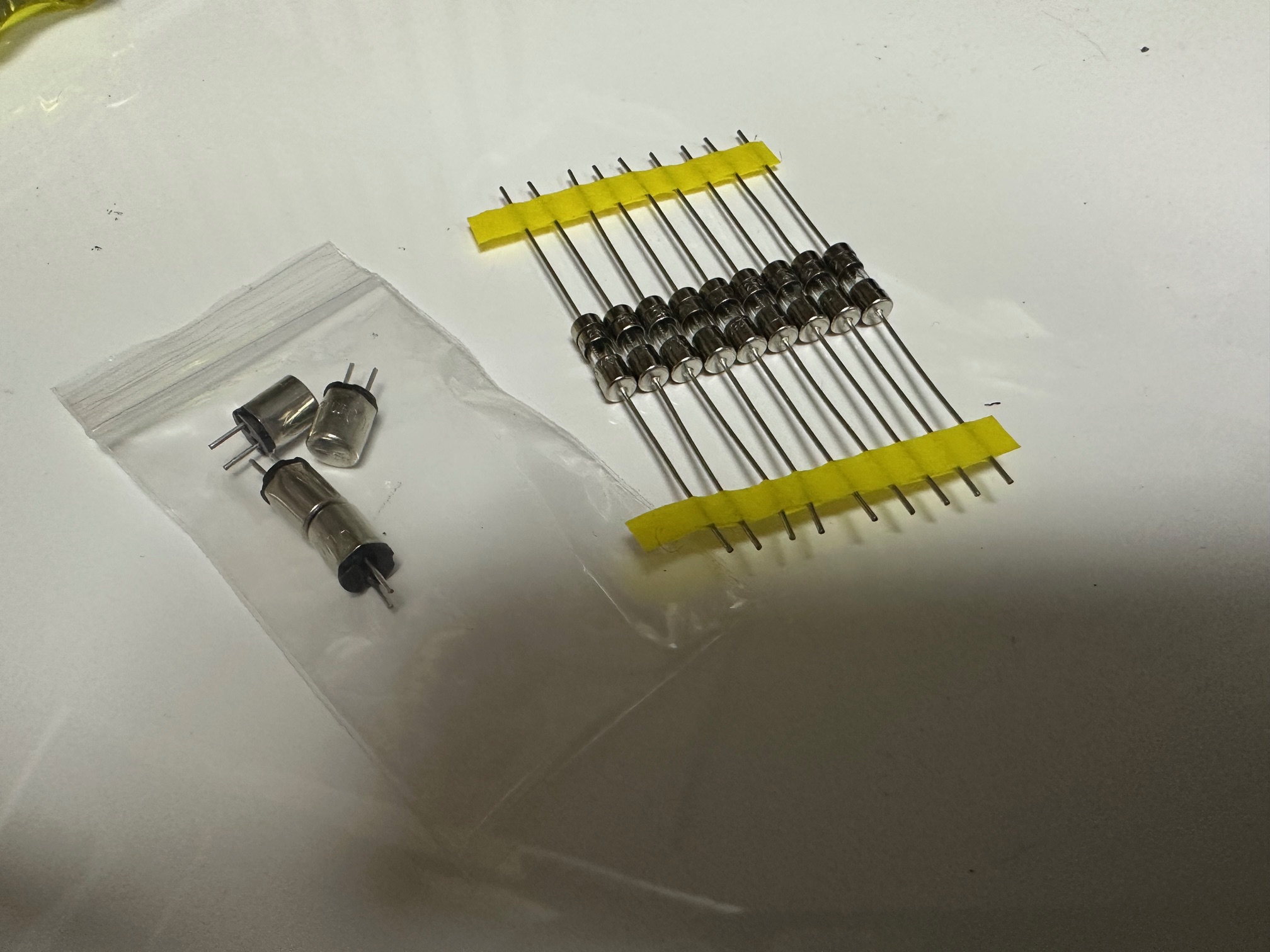
Getting the sub board back installed is a lot easier once you remove the screws around the hard drive, just to be able to pull it out. This gives you both easier access to the back connector which has to connect to the bottom of the sub board, but also the hard drive cable is quite long and gives you room to attach it before laying the board back down back into place.
IBM PS/Note N33 SX LCD / Inverter Repair
My 12Mhz N33 only could display to the internal LCD, so it was important that this worked properly. It was just about visible but something was definitely was off. These displays were bad, but not this bad and the variable resistor screen sliders wouldn't do much, apart from make the display intermittently vaguely visible and 'off'.
As far as I could tell, the 12Mhz and 16Mhz displays and their inverters are the same. The danger with the inverter is that it has one power connector at the top to the LCD's CCFL tube - this is generally ok. The other connector at the bottom is and 8-pin connector which has gone brittle over time. If you remove it, be very very careful as it does fall to pieces if you unplug it too many times.
As usual, capacitor were the issue and these were relatively easy to replace. You take the front panel off by removing 3 pairs of screws. 2 along the top, 2 hidden under square paper covers behind the status LEDs and another final pair behind the plastic rectangles directly above the hinges. Here's a picture in the manual showing the bottom two pairs:
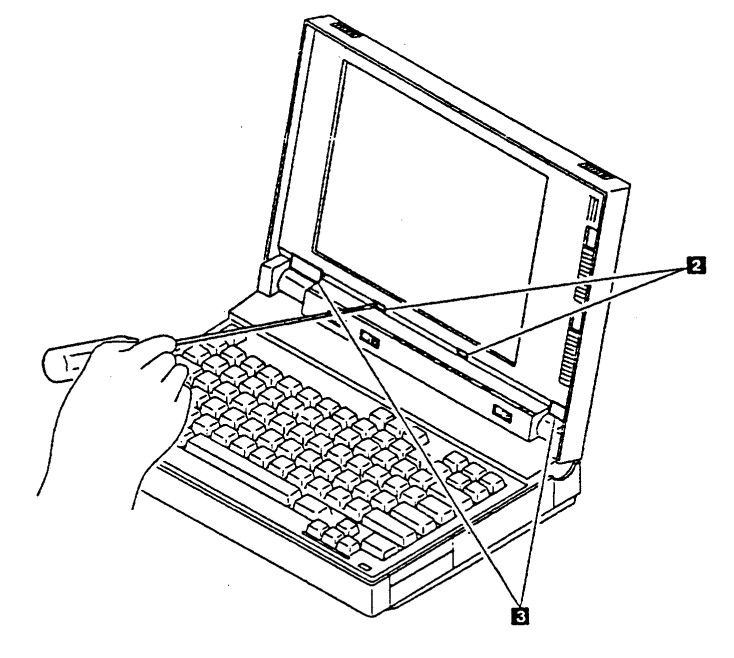
And here is with the front panel removed:
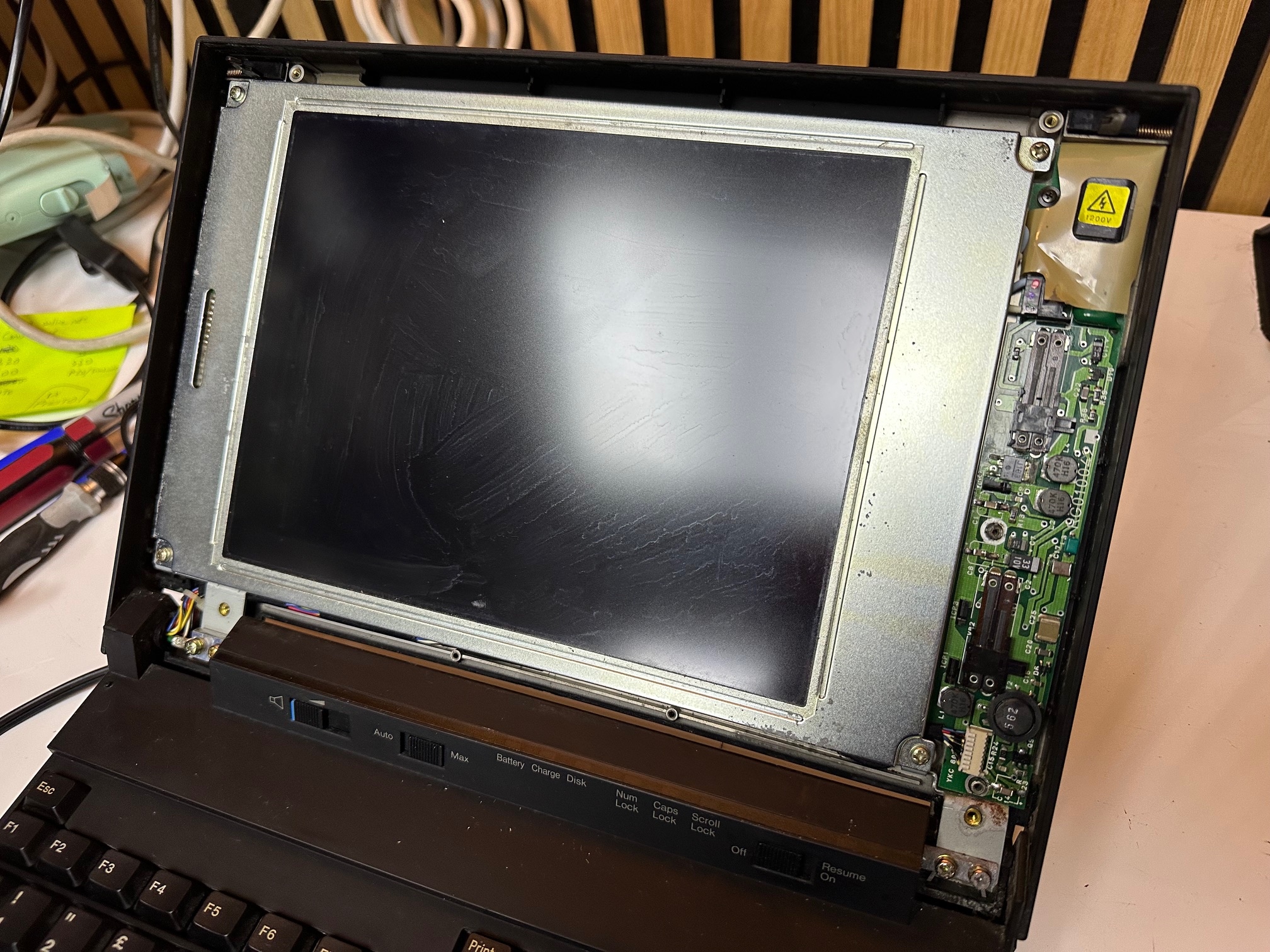
The inverter has 3 x surface mounted capacitors which are all rotten. Easily replaced with 3 ceramics. Also on the invertor is a boxed-in electrolytic measuring 6.8v. I replaced this too, because I just prefer to have no fluid caps on my machines.
Here is the rear of the LCD panel:
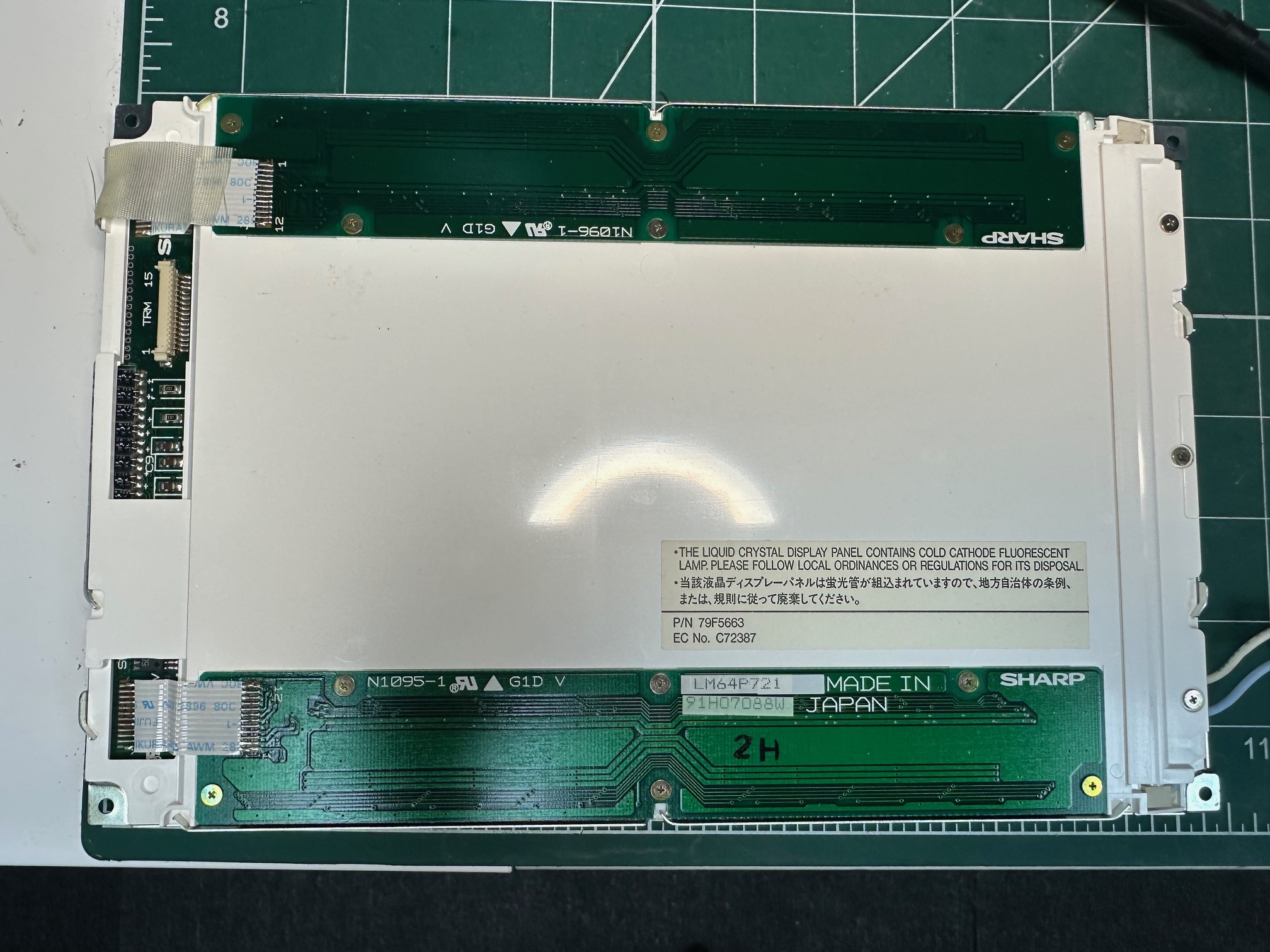
Inverter Before:
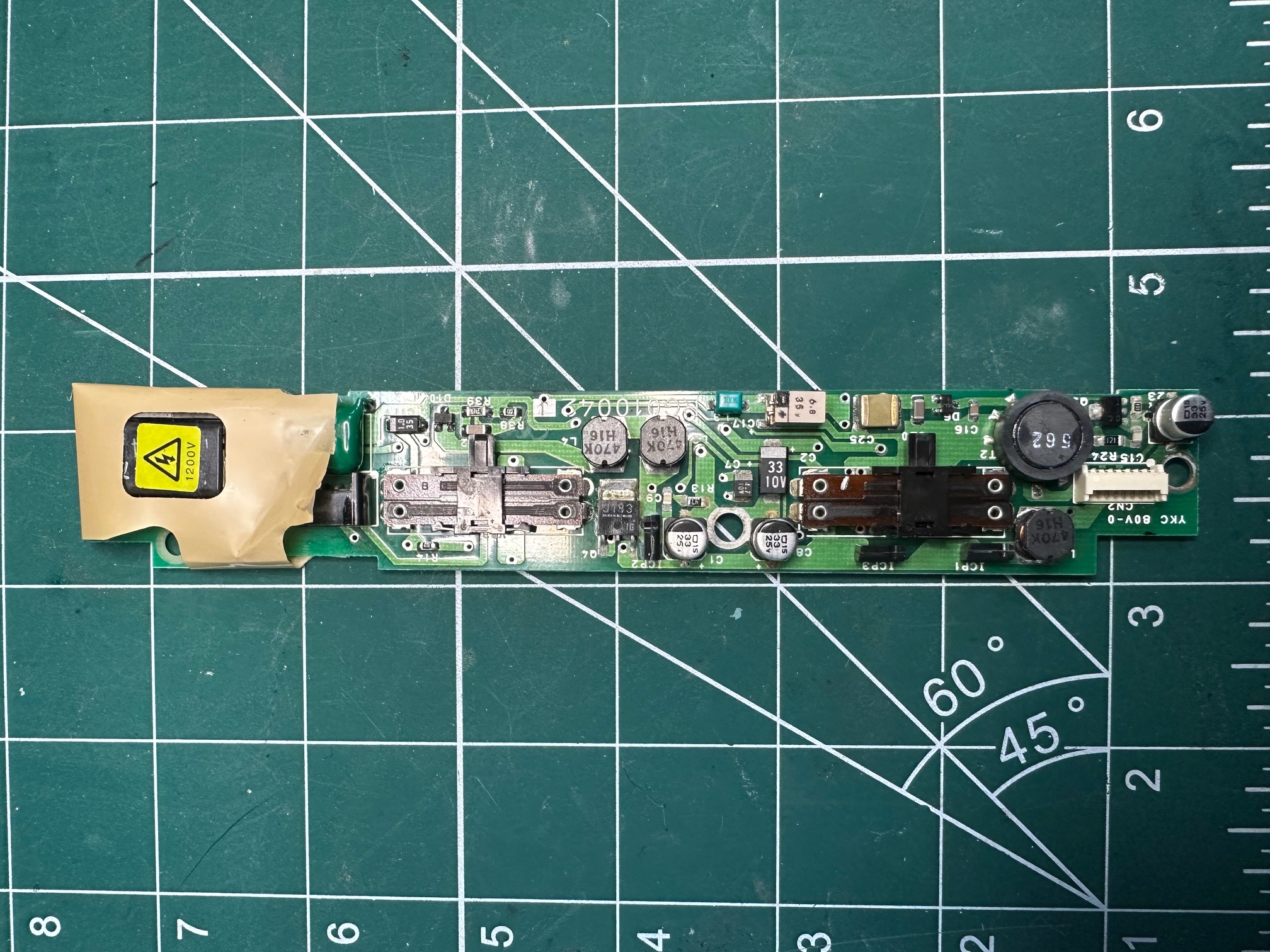
Inverter Underneath:
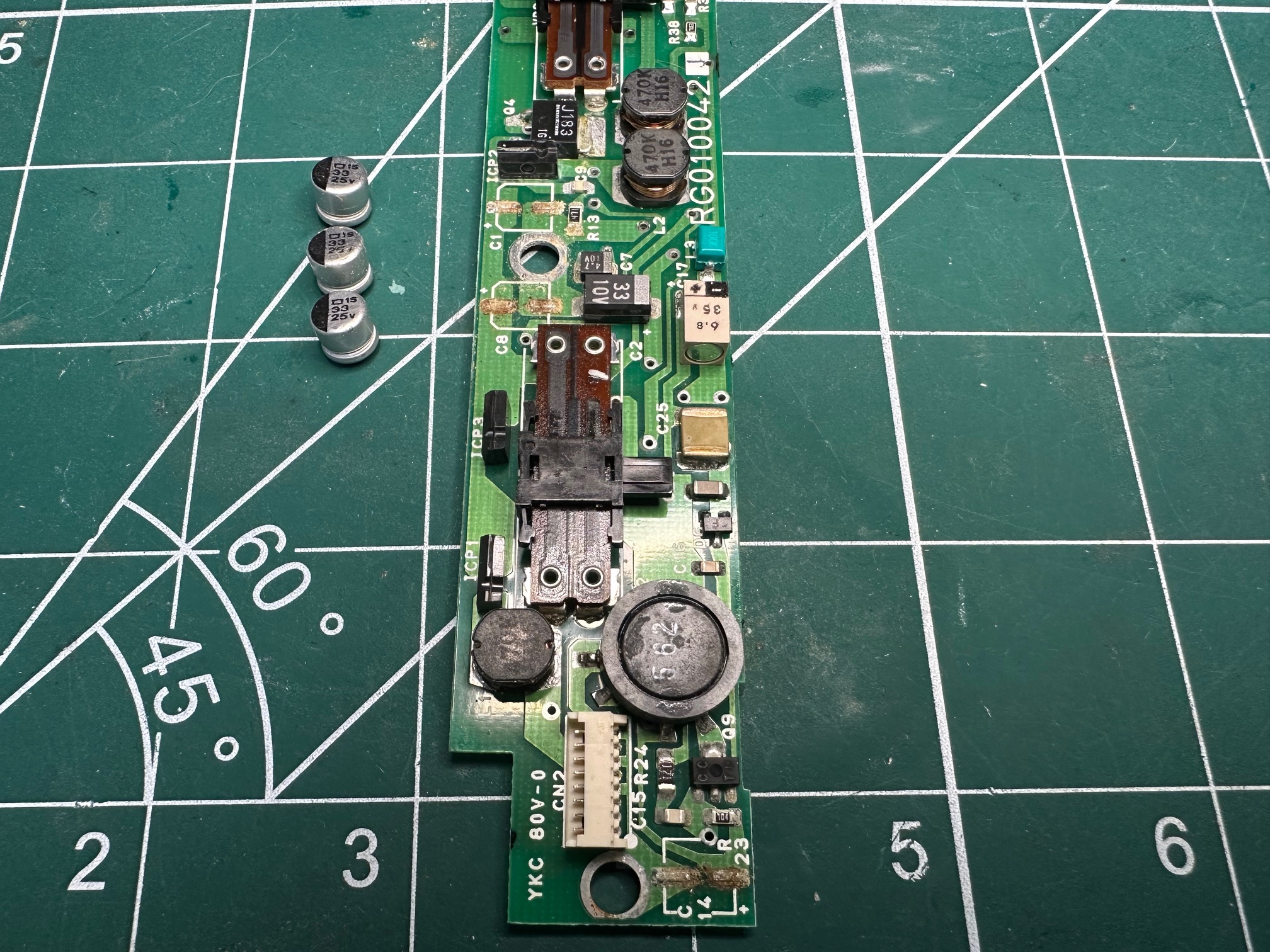
Inverter After:
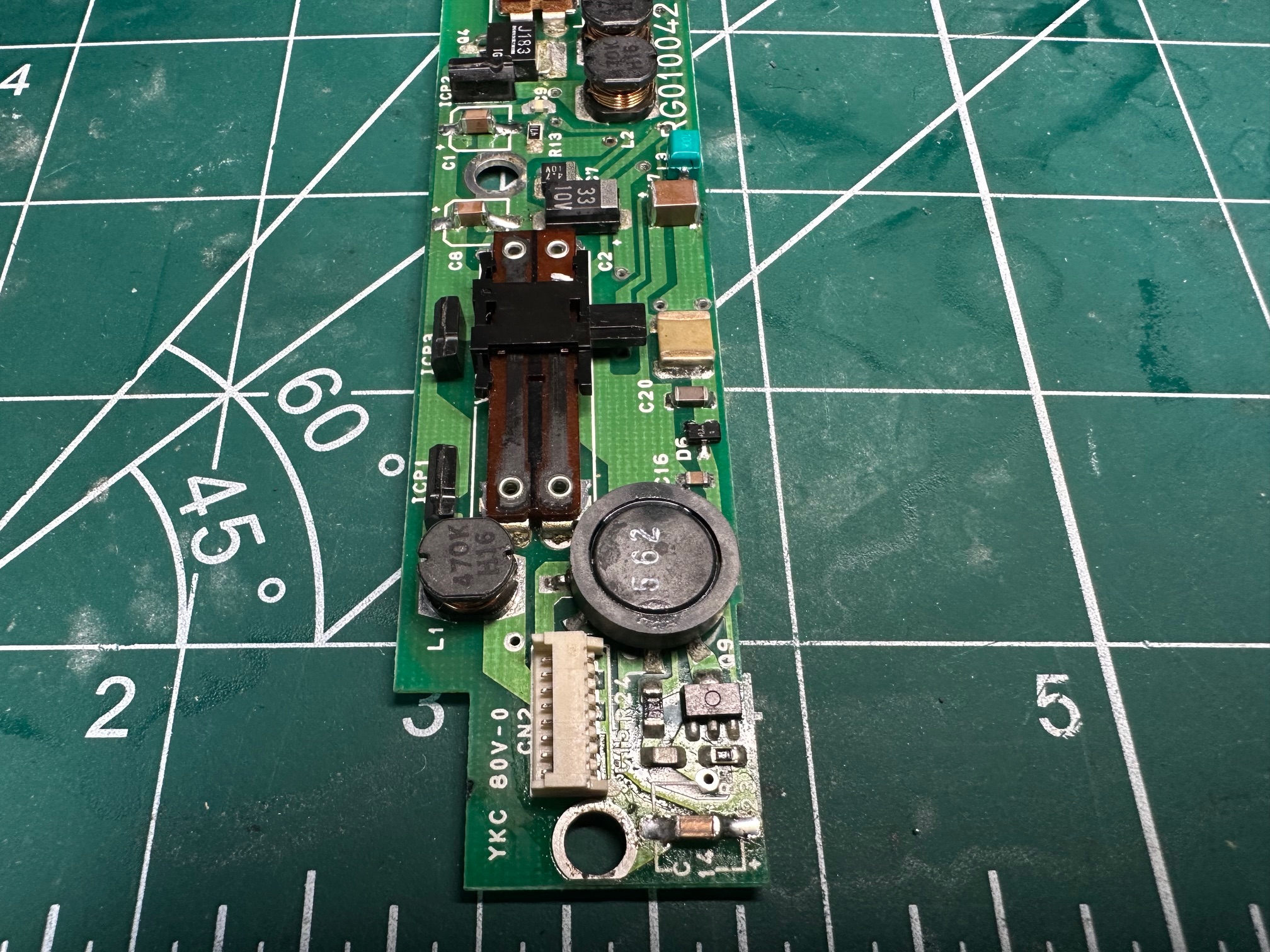
Next, the LCD itself has a row of 8 x 3R3 (0.33pf) electrolytics in a row, which I assume have failed or are failing. I replace these with tiny ceramic capacitors which seem to work fine.
This is the capacitor we're replacing:
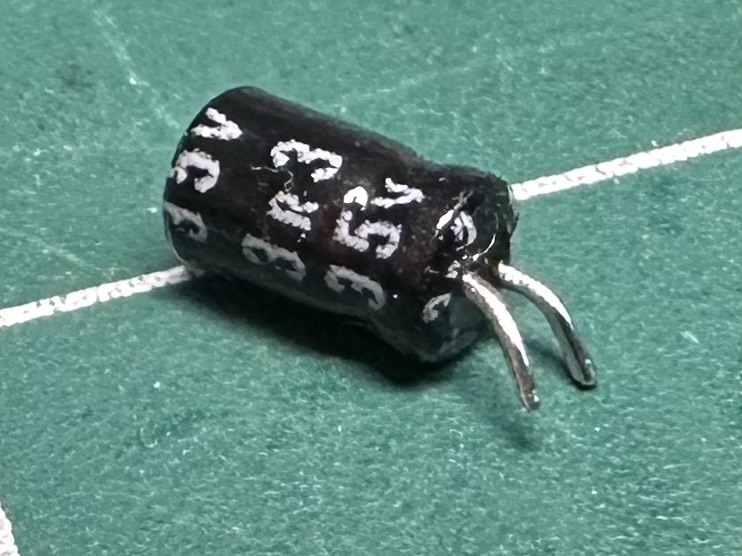
Before Recapping:
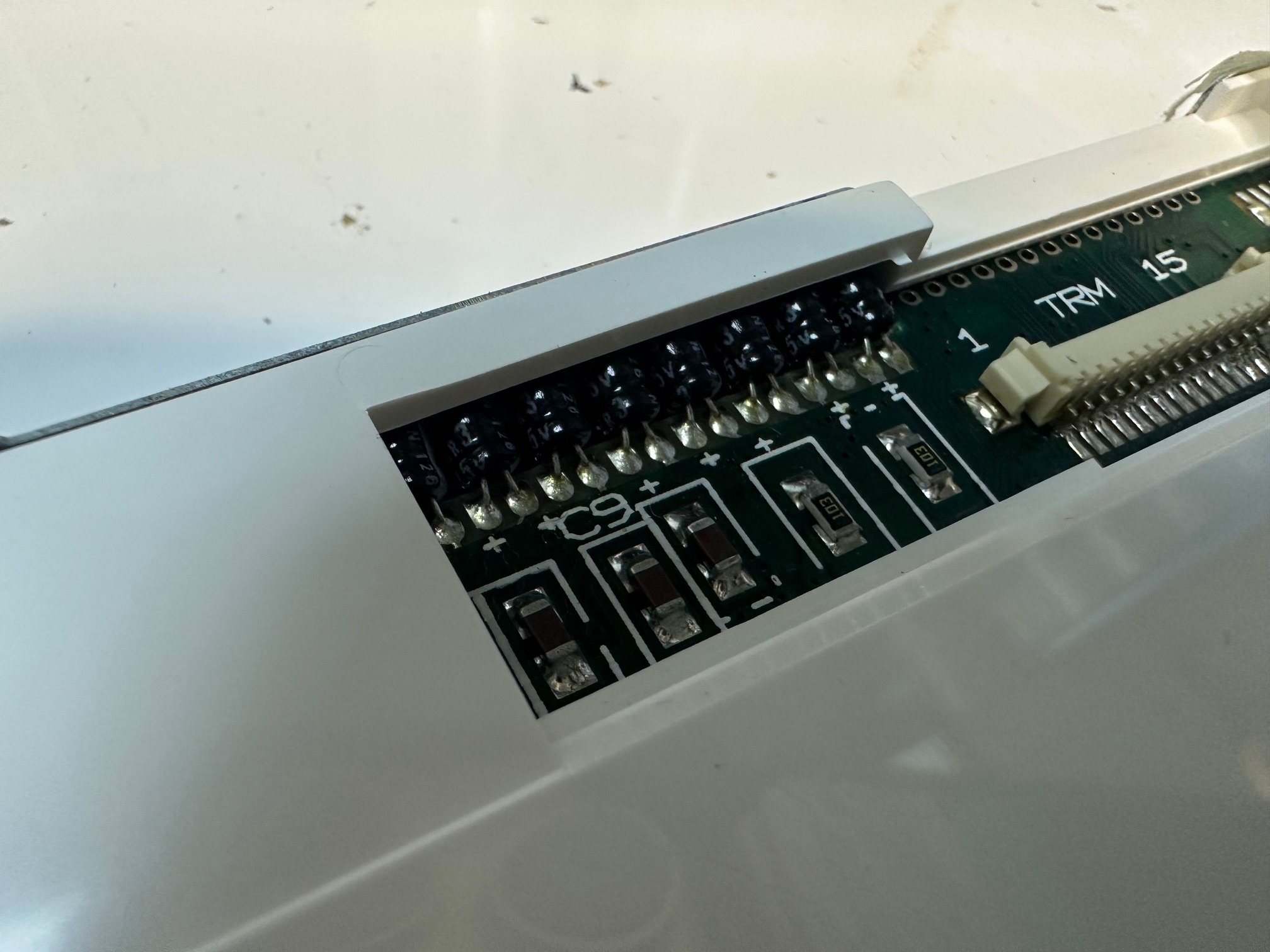
With replaced ceramics:

N33 Floppy
The external floppy drive was old school, but only had one surface mounted electrolytic capactitor inside:
N33 APEX-MAIN Board
The second main board inside the machine has 7 surface mounted electrolytic capacitors - all of which were in the process of failing and leaving crusty residue all over the board. I replaced these with tantalums. Also on this board, close to where the main dock connector is, is a soldered on daughterboard which is held down by 5 pins either end, and on this board is 6 through-hole capacitors. None of these showed obvious signs of failure but I replaced them anyway.
Also worth noting on this soldered daughterboard, there is another through-hole 2a fuse in green.
Recovering from Lost CMOS / Dead CMOS Battery
The reference disk maker is here. You have to use the maker as copying the raw files to a floppy will not be bootable.
The reference disk is required to restore the settings of this machine, as there is no user-configurable BIOS program built-in. The reference disk creator file is easy to obtain and as long as you have an older Windows 3/95/98 machine, you can easily run this in DOS and create the disk. However I encountered another problem which I have also encountered a few times before - the reference disk will often not be read on a drive which didn't create it in the first place! This creates a catch-22 because on a non-booting machine, how do you create the disk? Well you have to find another machine with the same type of external floppy drive, which does have a working operating system and create the disk on that. Oddly, the nearest machine I had which matched that description was a 730T which immediately stepped-up and created the disk without an issue!
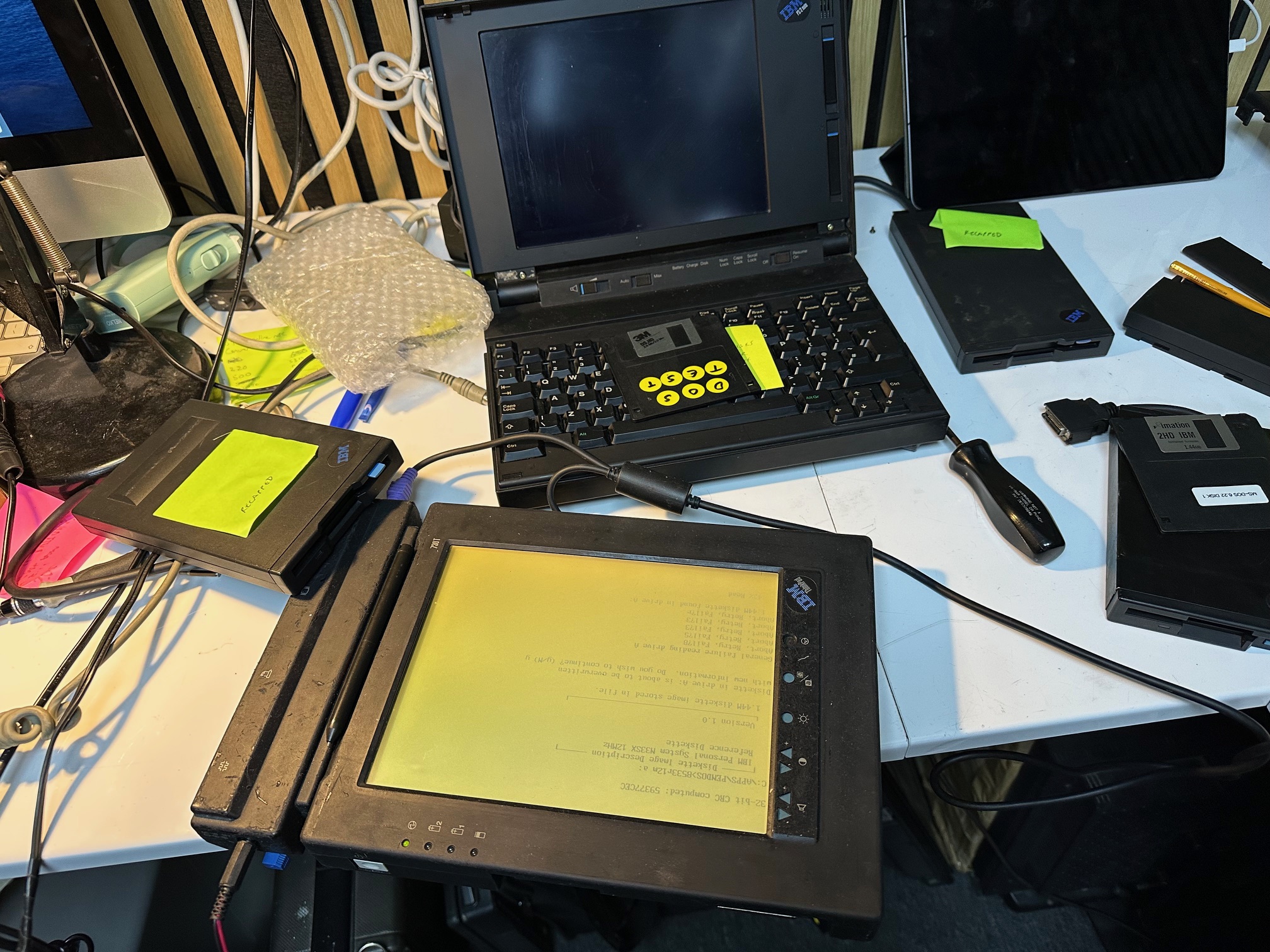
From this, I was able to plug the same floppy disk and drive back into the N33 and it booted fine, auto configured, and the hard drive booted up into DOS and Windows:
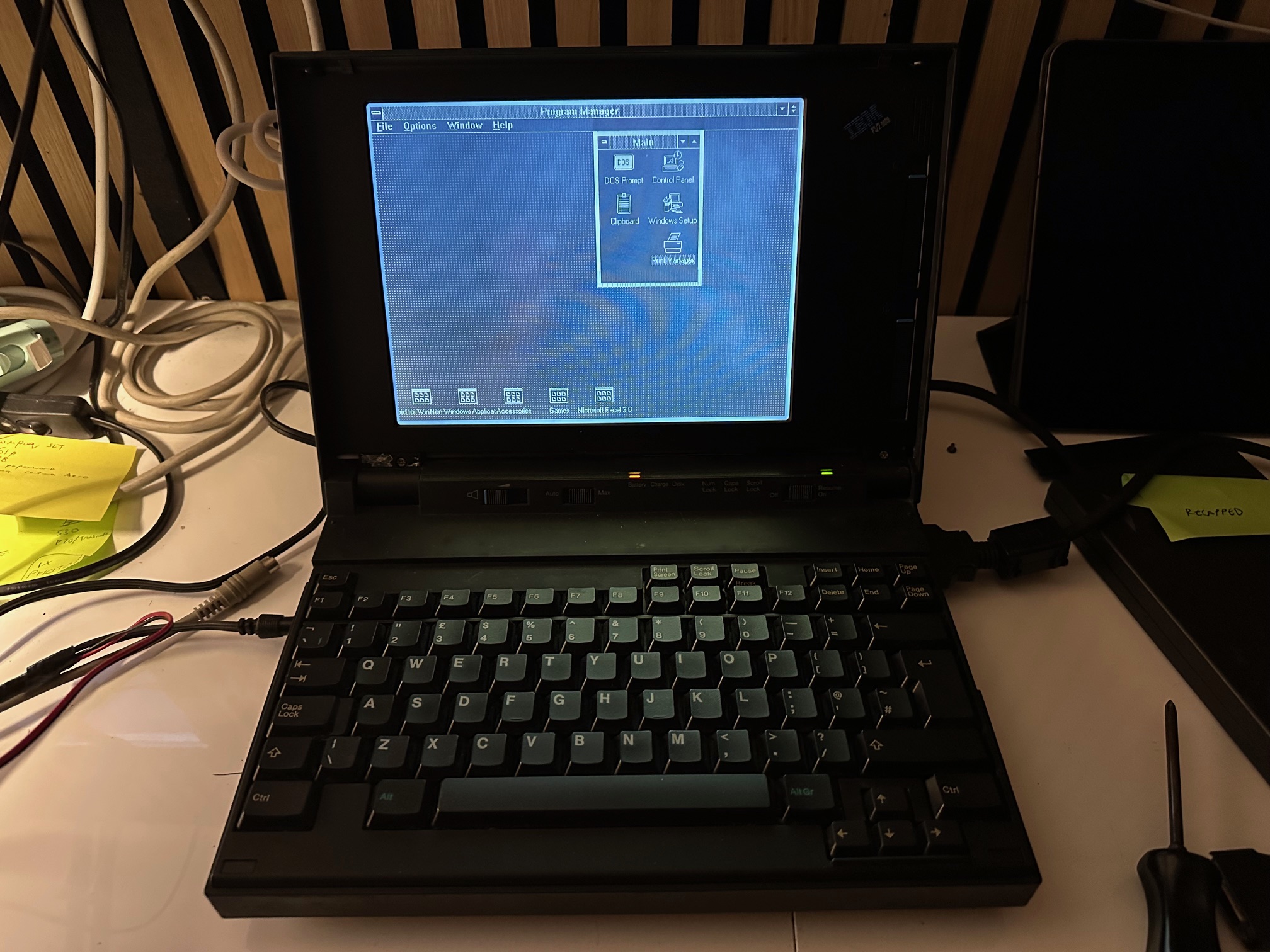
One last thing - the reference disk made on the same floppy in a different machine, worked for about 6 hours and then stopped booting. I suspect booting from floppy may eventually be this machine's downfall.
